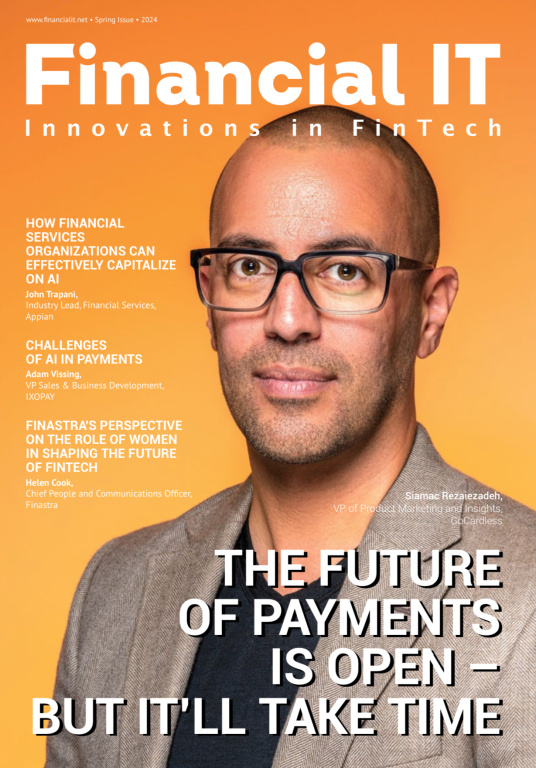Traditional Banks that Don’t Prioritise Digital Inclusion Face Being Left Behind

- Laura Rae, Co-founder at Openbox
- 27.03.2024 08:15 am #banking #innovation #AI
It’s not so long ago that every financial transaction we wanted to make involved leaving the house and physically handing over notes and coins.
In the past people often made the weekly walk to the local branch of their building society to pay their mortgage in cash. Paying gas and electricity bills meant going to the Post Office. Even transferring money to a friend or family member involved writing a cheque, putting it in an envelope and walking to the post-box.
Today all of these functions can be performed in a matter of seconds on a smartphone, anywhere in the world. It’s easy to be seduced by the idea that, as technology advances, everyone benefits to the same extent, no matter who they are, where they come from or who they bank with.
The Accessibility Dilemma
However, despite much of the technology still being in its infancy, divisions are already evident in the quality of provision offered by banks that take issues like accessibility and inclusiveness seriously, creating user-friendly interfaces and intuitive customer experiences, and those that don’t.
While there’s always a danger with crude generalisations, there’s a perceived divide in the quality of digital banking products and services offered by traditional, high street banks and their online-only, fintech counterparts.
In the fast-evolving landscape of modern finance the winds of change are blowing, and legacy institutions are at risk of being left behind in the storm of innovation.
The core issue plaguing traditional banks is their reluctance or inability to pivot swiftly in the face of digital disruption. These banks are burdened by established management and reporting systems, and an organisational structure that separates digital teams from financial experts. This compartmentalisation has led to a disconnect, hindering the seamless integration of digital innovation into the financial experience.
One of the critical pitfalls appears to be a sluggishness in catering to diverse user needs, for example for customers who have vision impairments, learning difficulties, or limited digital literacy.
Falling Behind Fintech Innovations
Traditional banks generally take longer to introduce innovations, hampered by long-winded, siloed decision-making, red-tape and a cultural resistance to change.
In contrast, nimble and innovative fintechs are more likely to have prioritised a streamlined, digital-first approach, that seamlessly blends technology and finance expertise, fostering an environment where customer needs are central to the design and execution of financial services.
They are more likely to make inclusivity an essential part of design, democratising banking by removing barriers to entry, making financial services accessible to a broader range of individuals.
This inclusivity is not merely lip service – the most successful fintech banks are those that have designed their digital interfaces with careful consideration for users with various needs, prioritising plain language, simple navigation, and an overall frictionless experience.
The Empathy Deficit
The challenge for traditional banks, if they are not to be left behind in this digital revolution, is to reconfigure those internal structures that stifle creativity and delay innovation, and to address an ‘empathy deficit’ that prioritises their own organisational structures over customer experience.
To bridge the gap, such institutions must align their technology and customer design teams, fostering collaboration and understanding. The ultimate goal should be the seamless integration of digital innovation, ensuring that customer experience is not only efficient, but also empathetic to diverse needs.
The Road to Redemption
Traditional banks can revamp their digital offerings by making the following three fundamental changes:
Ensuring internal collaboration across teams.
Prioritising user experience by aligning customer and tech perspectives.
Advocating for a digital-first mindset to adapt to the evolving financial landscape.
These changes will help to facilitate changes that ensure the creation of a continuous digital banking interface that follows seven key principles – the need for personalisation, customisation, transparency, a mobile-first approach, simplicity, modern aesthetic design, intuitive design, and adaptable design.
Better internal collaboration between teams will mean those responsible for implementing inclusion policies across the organisation can better communicate their thoughts and ideas with technical staff.
Personalisation involves tailoring the user experience based on customer data, offering targeted services, and enhancing engagement. Customisation allows users to adjust the digital banking app's UI and UX according to their preferences, fostering convenience.
Transparency is crucial in building trust, requiring clear communication about the consequences of user actions, and utilising various channels for notifications. A mobile-first approach recognises the dominance of mobile devices in users' lives, advocating for a design strategy that prioritises mobile interfaces and ensures swift load times.
Simplicity is emphasised to prevent user frustration, encouraging a minimalist design that prioritises essential functions and respects accessibility requirements. Modern, aesthetic design is highlighted as crucial for positive first impressions, advocating for a balanced and clutter-free interface. Intuitive design promotes ease of use, drawing from widely recognised elements in other applications to facilitate user navigation without the need for extensive instructions.
Lastly, adaptable design stresses the importance of creating consistent experiences across various devices, acknowledging the different contexts and screen sizes associated with smartphones, tablets, and smartwatches.
The Call for Change
As the financial sector moves towards digital currencies and innovative fintech solutions, banks must become more agile in anticipating and meeting evolving customer needs.
The future requires a commitment to continuous improvement, staying ahead of technological trends, and remaining attuned to the ever-changing expectations of customers.
As financial institutions do more to leverage artificial intelligence (AI), there is a responsibility to ensure that these technologies do not inadvertently perpetuate existing social inequalities. Traditional high street banks should not only embrace digital innovation but also to do so responsibly, with a keen awareness of the potential societal impacts.
To survive and thrive, banks must shed their legacy shackles, prioritise customer experience, and embrace digital innovation.
The rise of fintech banks demonstrates the rewards awaiting those who adapt swiftly to the changing winds of the financial landscape. The future belongs to the agile, inclusive, and customer-focused institutions ready to navigate the digital frontier.





















